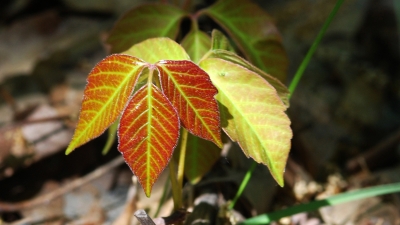
Poison ivy is a common poisonous plant that causes an itchy skin rash. Other rash-inducing poisonous plants include poison oak and poison sumac. These plants produce an oily sap called urushiol that brings on an irritating, itchy allergic reaction. When you touch a poisonous plant or an object that’s been in contact with a plant, you develop an itchy rash. This rash is a form of allergic contact dermatitis.
Poison ivy is most known for its leaves. Each leaf has three leaflets. A popular saying is, “Leaves of three, let them be.” Poison ivy grows as a shrub and a vine. Its summer-green leaves turn reddish in the spring and yellow, orange or red in the fall. A poison ivy shrub may have white berries.
The leaves have three leaflets like poison ivy, but with rounded tips. The leaves’ undersides are fuzzy and lighter in color than the top. Poison oak grows as a shrub. It’s most common in the western United States. The shrub sometimes has white or yellow berries.
Poison sumac is tall shrub or small tree has drooping clusters of green berries. (Nonpoisonous sumacs have red, upright berries. Contact with nonpoisonous sumacs won’t cause an allergic rash.) Each leaf has clusters of seven to 13 smooth leaflets arranged in pairs. Poison sumac thrives in wet, swampy regions.
Credit : Cleveland Clinic
Picture Credit : Google




